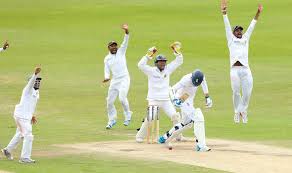Formats of Cricket Game – Test Cricket
There are three formats in cricket games being played at the international level namely the Test Cricket, One-Day Internationals and Twenty20 Internationals. In this article we are going to introduce each of the formats and how it works. Let’s begin with the most traditional form which is Test Cricket.
Test Crickets
Test matches were invented in 1877 and each game will last for 5 days. It tests and measures teams both emotionally and physically over five days of play across two innings each. Players require a great deal of temperament, stamina, technique, and dedication, given that different conditions and problems are faced throughout the 5-day period. In this cricket format there are no restrictions on fielding. Players from both the team are wearing white tees and pants in this format. The game is played with a red leather ball that stands out from white clothes all over. While this style has historically been performed only during the day (inadequate light allows the match to be switched off), 2015 saw the first day / night international test game played with a pink pitch.
Day / night Test matches are gradually gaining popularity, but day Test matches are still outnumbered by a vast majority. Two teams let’s assume team A and team b have to finish two innings each. Every day consists of two 3-hour periods of play time distributed to each side of a 40-minute lunch break and a 20-minute afternoon tea break. The fielding team will have to bowl 90 overs before the day’s play ends. Who’s going to bat first, and who’s going to get to the bowl first? This is decided by the result of the coin flip by the leaders of both teams. Let’s say Team A bats first and scores X runs before either having all-out or declaring their innings which is the judgment of their captain. Then Team B turns to bat and collects as many runs as they can. Ideally, they’d have to achieve a minimum of X runs to be in with a chance of winning the game. As Team B gets all out, it comes to an end of 2 innings, once from each side.

The difference between the runs earned by both teams is used to determine which side is going to bat next. If Team A leads Team B by at least 200 runs after 2 innings, Team A may compel Team B to bat again. For example, if Team A scored 450, and Team B scored 200, the leader of Team A will have the ability to impose a follow-on, i.e. compel Team B to bat back instantly. This gives them a better probability of winning the match inside a 5-day period. However, if Team B will not lead Team A by 200 runs after their games, Team A would have to struggle again to seek and collect as many runs as possible. After declaring all their innings it is Team B turn to bat. The only way for Team B to win the game now is by chasing the cumulative total of runs from the two innings they’re still going through. For example, let’s say Team A scored 350 runs, Team 2 scores 400 runs, and Team A scores 300 runs in the second inning. This indicates that for Team B to win the game, they have to score 250 runs to win the game. If Team B is able to meet the target inside the allocated time of play and the overs left to be bowled, they will be proclaimed winners. The other scenario entails Team A bringing Team B out of the chase with time with overs remaining until they get to 250 points, which makes Team A crowned champions. A match shall be declared a tie in the case that none of the teams were willing to fulfill the conditions alluded to above.





